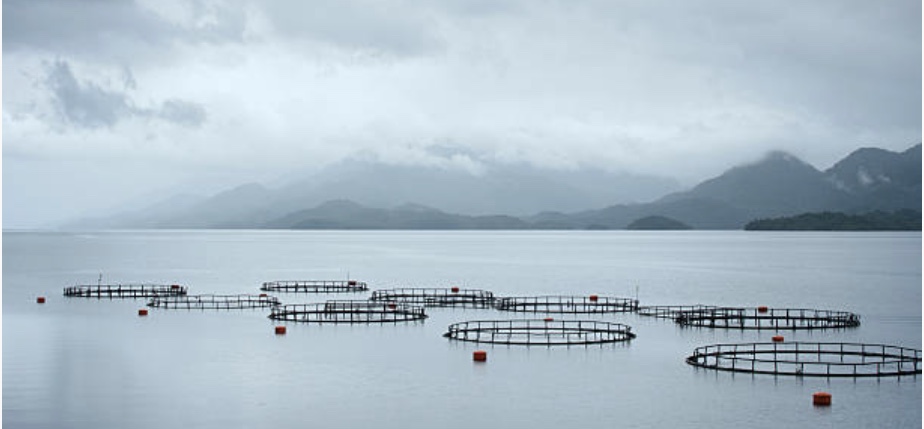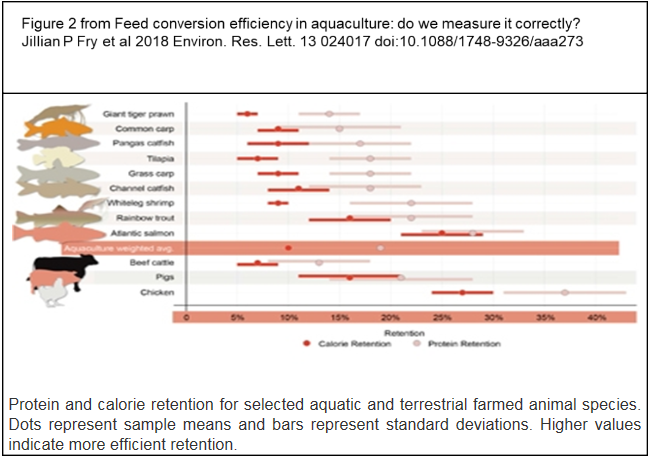posted on Monday, June 25, 2018

I have been working on a project that includes research and analysis regarding aquaculture in the USA. Fish, shrimp and other types of seafood are an important part of the diets for most Americans.
At this point the US is a net importer of seafood. However, there are a lot of things happening in breeding, feed composition, consumer trends and production technology that will support future growth in USA production of seafood. For example:
- Trout strains that are more tolerant to soybean meal as a replacement for fish meal, an ingredient which is in short supply and expensive.
- Soybean meal and other grain meals are taking the place of some of the fish meal in many other food fish species.
- Soybean oil and other vegetable oils are taking the place of some of the fish oil in fish food diets.
- The development of recirculating aquaculture systems (RAS) that reduce the footprint of an operation and conserves water.
- Expansion and/or startup of feed mills dedicated to fish food production.
- A consumer trend to “buy local” and the desire to know “where did my food come from and what was it fed?”.
I love all kinds of seafood; my favorite is salmon. I also love beef, pork and poultry. So, I am always interested when I hear about studies touting one source of protein versus another. One of the ways researchers and producers tend to compare species raised for food is their feed conversion ratio (FCR). FCR is calculated by dividing the total amount of feed an animal consumes by its harvest weight. Some alternatives divide the total amount of feed consumed by the edible weight (yield) of the animal. So, an Atlantic salmon with a FCR of 1.2 is more efficient at feed conversion than a pig with a FCR of 3. But, is that the whole story?
You can look at any species raised for food and focus on the characteristics and value of the edible portion of the animal. With most species raised for food, it is also advisable to consider the end use of the rest of the animal. Some examples of end use are:
- Swine bones are processed into bone meal which can find its way into feed formulas for fish and other animals.
- Poultry feathers are processed into feather meal which is used in feed formulas for animals.
- Beef tallow is processed and used in industrial applications and also as feed ingredients.
- Pork fat (Choice White Grease) is used in the food industry as well as in the biofuel industry.
- Shoes, belts, boots and all sorts of other leather products are produced from the hides of animals slaughtered for food.
- Tilapia fish skin bandages have been used to treat animals burned in the California wildfires.1
I just read an interesting article about a study exploring an alternative view of comparing aquaculture versus land based animal production. The article is entitled “Feed conversion efficiency in aquaculture: do we measure it correctly?” (Fry, 2018)i.
A common view is that aquatic animals raised for food are more efficient in converting feed to harvest weight compared to land-raised animals. If you just look at typical FCR numbers that seems to be true. As a result, some studies suggest that land-raised food animals will put a strain on land use and divert land human food production to animal food production. Other concerns are demands on water supplies and the effects of methane gas produced by animals.. Other concerns are demands on water supplies and the effects of methane gas produced by animals.
This interesting study looks at the calorie and protein retention from the feed each species consumes. The chart below from the article compares the protein and calorie retention characteristics of several aquatic species to beef cattle, pigs and chicken. As you can see, Chicken and Atlantic Salmon are very close in demonstrating the highest retention of calories and protein.

One of the studies’ conclusions is “Comparing all terrestrial and aquatic animals in the study, chickens are most efficient using these measures, followed by Atlantic salmon. Despite lower FCRs in aquaculture, protein and calorie retention for aquaculture production is comparable to livestock production. This is, in part, due to farmed fish and shrimp requiring higher levels of protein and calories in feed compared to chickens, pigs, and cattle. Strategies to address global food security should consider these alternative efficiency measures.” (Fry, 2018 abstract)
To view the full study click HERE
My conclusion is, I’m glad it makes sense to produce all of the meat and seafood I like to eat.